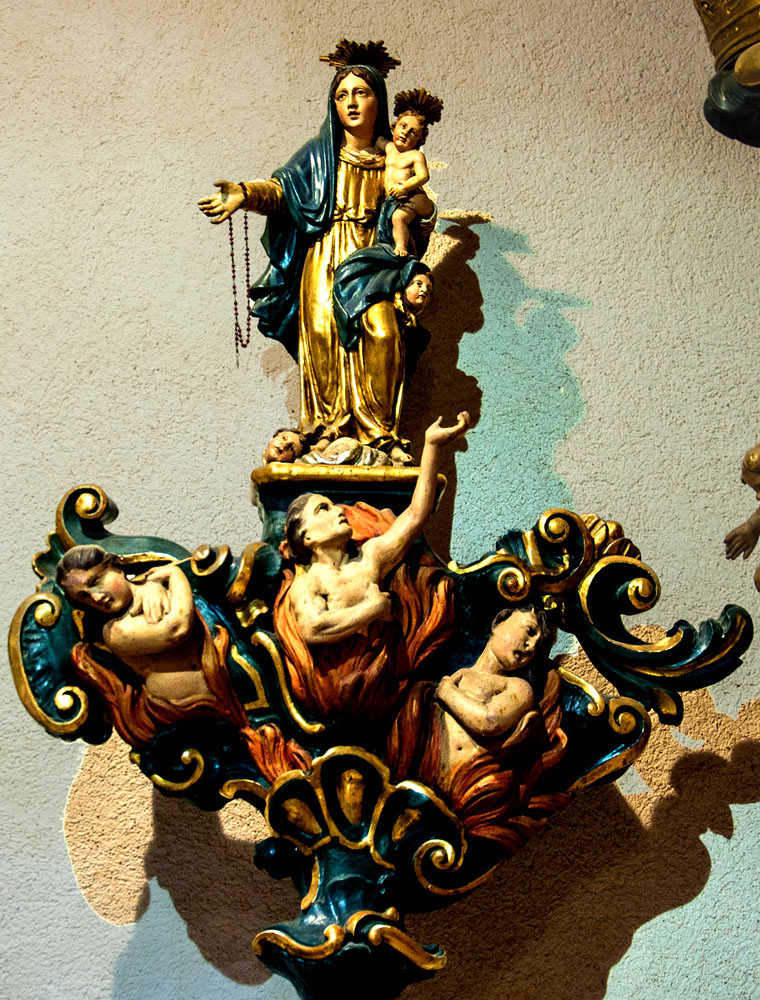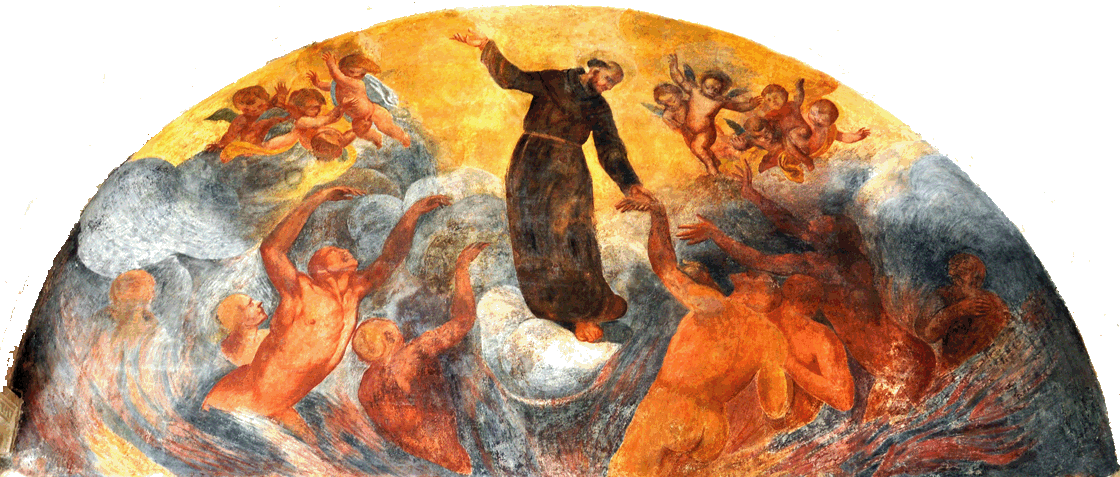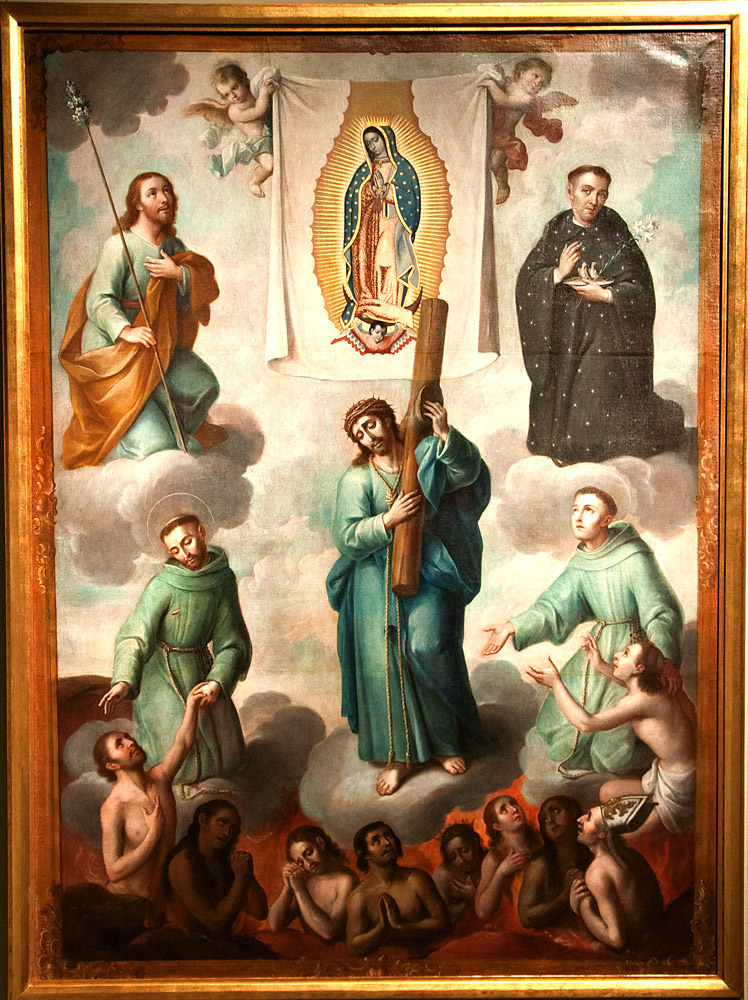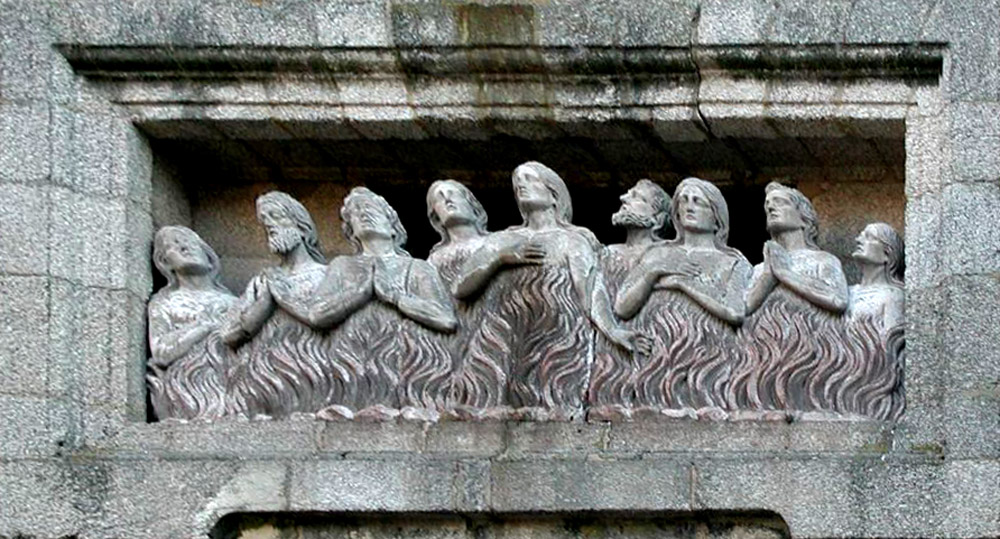In short, the Church was to do more to encourage people to offer prayers and good works for the relief of the souls in Purgatory. In post-Tridentine art, the Rosary was the prayer for souls that was most often urged on the faithful, as in the first picture at right. Another doctrine re-affirmed by the Council was that saints can and will offer their own prayers for these souls.1 This is most often pictured as specific saints leading souls up from Purgatory, as in the second picture. Or the image may focus on Christ himself, the intercessor par excellence, as in the third picture.
In all these types the souls in Purgatory stand in flames at the bottom of the image. This pattern may have developed from Crucifixion images in which the souls of the Old Testament faithful are pictured beneath the Cross, such as this Crucifixion, where the Old Testament faithful stand in the underworld beneath the cross and await their salvation, and this crucifix with the faithful in a clipeus at the base. This type may have been influenced in turn by the medieval device of placing Adam at the foot of the cross (example).
Guardian Angel images sometimes picture the angel conducting his charge to Heaven while other souls continue to suffer in Purgatory below (example). In Francesco Maffei's The Guardian Angel (1655) the angel leads a boy across a narrow path representing the "strait way" of Matthew 7:14. In a popular genre in the 20th century derived from the painting, the boy has a girl companion and Maffei's background is made less purgatorial (example).
In the Divine Comedy (1308-20) Purgatory is an island mountain that the souls ascend the mountain as they are cleansed and made ready for Heaven. The "Mount Purgatory" trope then enters the visual arts in such works as Carpaccio's Martyrs of Mount Ararat.
Prepared in 2021 by Richard Stracke, Emeritus Professor of English, Augusta University
SHOWN ABOVE
Relief sculpture at the Chapel of Souls, Compostela, Spain (description page).
OTHER IMAGES
The Virgin and Child offer viewers the Rosary as a way to pray for the souls in Purgatory – See description page

St. Francis lends a hand to guide souls up from the flames – See description page

Christ is figured as the primary intercesor through his sacrifice on the cross, while other members of the "communion of saints" intercede for the souls in Purgatory – See the description page
MORE IMAGES
- 1720: Águilera, The Virgin of Carmen and the Souls of Purgatory encourages the prayers and practices associated with the "brown scapular" for the relief of the souls in Purgatory.
- After 1658, before 1811: A painting in a Venetian church pictures a guardian angel pulling his charge up out of Purgatory.
- After 1667: In this painting SS. Louis and Anthony of Padua intercede for the souls in Purgatory.
- Undated, possibly 18th century: In this painting of Our Lady of Mount Carmel angels distribute the brown scapular to souls in Purgatory.
- 21st century: At the base of a Crucifixion montage in New Mexico four souls in Purgatory alternate with three stylized corn cobs.
DATES
- November 2 is known as All Souls Day
FURTHER READING
- Catechism of the Catholic Church, ¶ 1030-1032.
NOTE
1 See the Catholic Encyclopedia, s.v. "Intercession (Mediation)" for the relevant passage from Trent Session XXV and supporting quotations from Thomas Aquinas and St. Jerome. All of these regard the prayers of saints on behalf of living individuals, but in the art they are usually pictured interceding for the souls in Purgatory.
